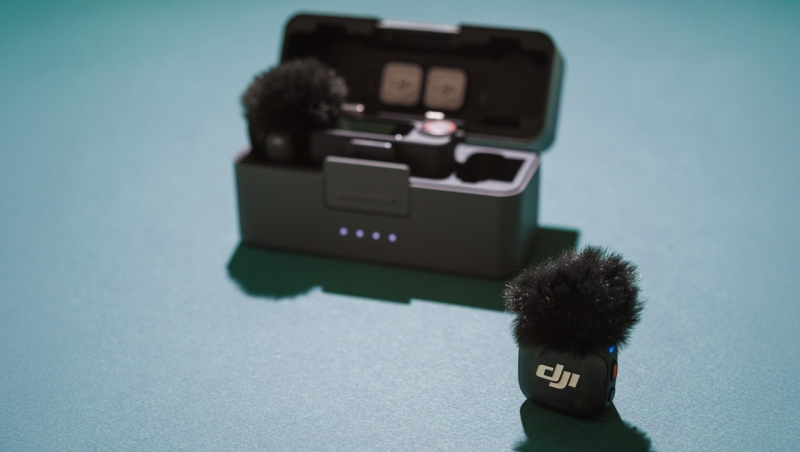Contents
Introducing DJI’s latest wireless audio system, the Mic 3, a smarter and more compact upgrade to its predecessor. DJI has taken what creators loved about the previous generation mic and refined it with improved connectivity, longer battery life, and smarter features packed into a sleek design. This new system promises to deliver professional-grade sound while staying lightweight and versatile, making it an appealing option for filmmakers, vloggers, and content creators who demand reliability on the go. Let’s find out if this sleek, compact system truly lives up to its promise of delivering smarter audio for creators, or if it’s just another incremental upgrade.
Build Quality
At first glance, it carries the same design DNA you’d expect from a DJI product, but this time the focus is on elevating its usability with a lighter form factor. Both the receiver and transmitter are made from solid plastic that feels durable, though I cannot comment on long-term wear and tear yet, as I have not used it for that long.
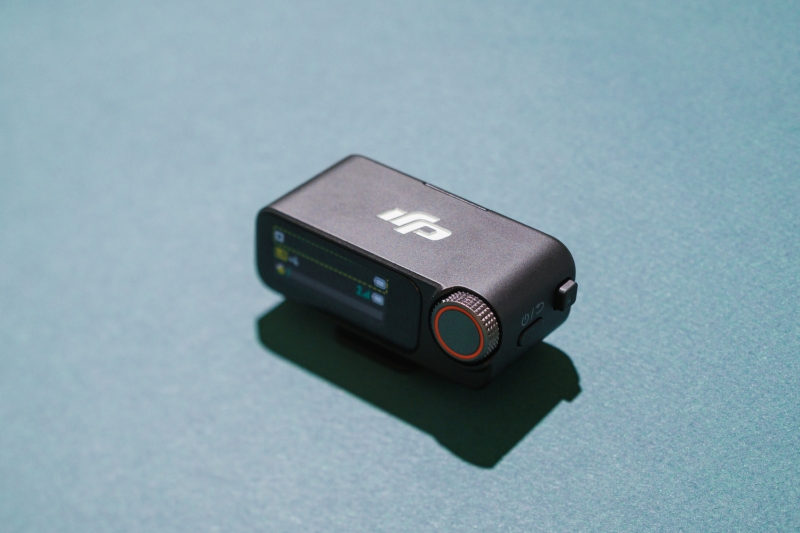
DJI Mic 3 receiver
The Mic 3 receiver is compact, measuring 53.85 × 28.69 × 22.00 mm and weighing only 25.1 g. Despite its small size, it’s packed with thoughtful physical controls: an on/off button that doubles as a back key, a clickable and rotatable knob for navigating menus and quick audio gain adjustment, and a 1.1-inch AMOLED touchscreen for quick access to deeper settings. The touchscreen can also be locked by long-pressing the adjustment knob to prevent accidental changes while shooting, which is especially useful when working on the go. Powering it all is a 275 mAh Li-ion battery, rated for up to 10 hours of use with noise cancellation and internal recording turned off, though real-world results will likely be slightly lower.
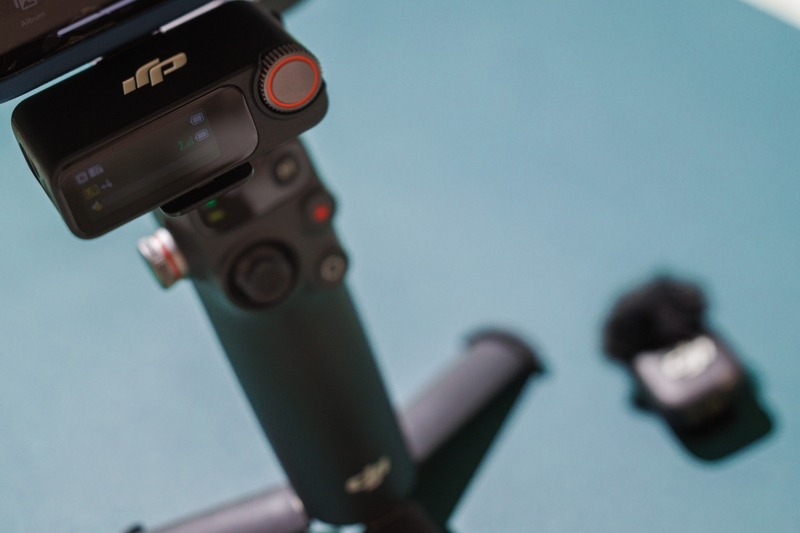
Attaching it to the iPhone with the Lightning phone adapter.
At the bottom, the receiver features a mounting clip that doubles as a cold shoe mount for attaching to your camera, along with contact points that support USB-C or Lightning phone adapters for mobile use and firmware updates directly from your phone. For cameras that support audio input via the hot shoe, you can also opt for the dedicated mic camera adapter. In terms of connectivity, there are two 3.5 mm input and output jacks on the side of the receiver for audio recording and monitoring, plus a USB-C port that expands its versatility, letting you use the system with a computer, camera, or smartphone. Altogether, it’s a well-built hub that balances portability with professional flexibility.
If you are impressed by the Mic 3 receiver size, you will be even more impressed by its transmitter. Measuring 28.77 × 28.34 × 16.35 mm and weighing only 16 g (with magnet attachment), it houses a 137 mAh Li-ion battery rated for up to 8 hours of operation with noise cancellation and internal recording disabled, and audio fed into a camera via the 3.5 mm cable. In practical terms, this allows a full day of recording without needing a recharge—unless you’re recording continuously for an entire day.
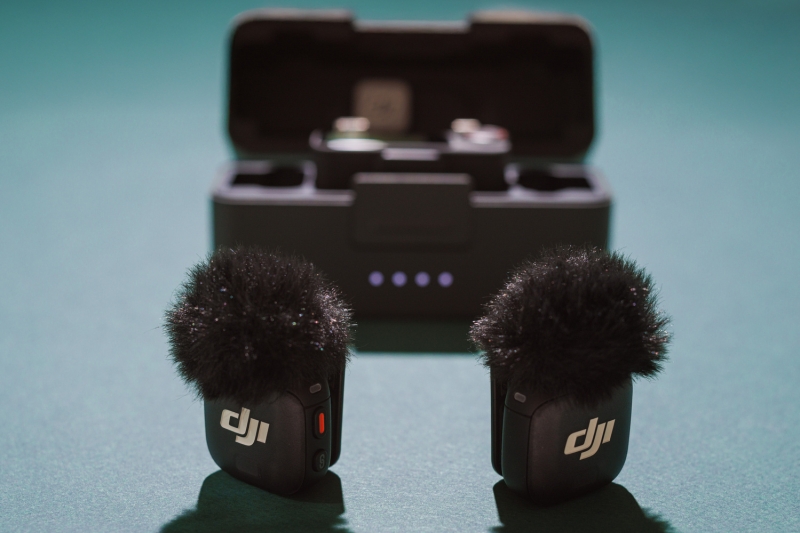
Design-wise, it keeps things minimal and discreet. The semi-transparent body features only two buttons—a pairing button and an action button (used for both activating internal recording and noise cancellation)—along with two LED indicators. There’s no 3.5 mm input or USB-C port, which means you can’t pair it with a lavalier mic. While this limits hiding options, the transmitter itself is still small enough to remain subtle behind collars—though not thin enough to hide completely behind a normal shirt without a bump. DJI also offers optional multi-color windscreens so the mic can better blend with talent attire, a thoughtful touch for creators concerned about visibility.

Notice the Mic 3 transmitter with black windscreen hidden underneath my collar on the right.
Audio recording from various applications becomes very easy thanks to its clever two-level magnetic attachment mechanism, giving it three versatile ways to attach creatively. On its own, the mic can snap directly onto any metal surface. For more flexibility, it can also be paired with either a slim magnetic strip for a low-profile setup or a rotatable magnetic clip that lets you fine-tune the mic’s direction for better audio capture. Do keep in mind that since this two-level magnetic attachment design allows the traditional clip to be detachable, you should only use either the magnetic clip or the magnet strip on its own, as stacking them together weakens the hold and won’t keep your mic securely in place.
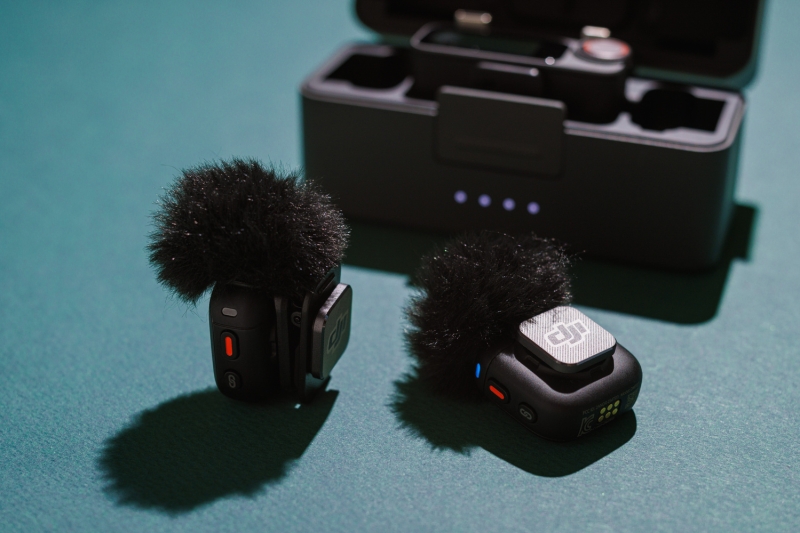
The left transmitter is using the magnet attachment the wrong way and the right transmitter is showing the correct way of using the magnet attachment.
The Mic 3 transmitter also comes with flexible control options that make it easy to operate even without looking. For those who want the mic to stay even more discreet, the LED indicators can be switched off entirely to help conceal the unit when mounted directly. Both internal audio recording and noise cancellation can be triggered via the action button, with clear haptic feedback to confirm each command: a single press with one vibration starts and stops internal recording, indicated by a constant red LED on the opposite side, while a quick double press toggles noise cancellation on or off. This strong haptic feedback makes the transmitter particularly reliable when used without the receiver, as you don’t need to constantly check the LED indicators to know what’s happening. It’s a simple yet effective design choice that fits well into real-world workflows where speed and confidence matter.
DJI’s charging case is easily one of my favorite accessories to keep things neat for those always on the go. Built from plastic, it feels surprisingly solid in the hand. The hinge is also sturdy, and opening the lid wakes the transmitters and receiver almost instantly. Measuring 106.30 × 42.50 × 59.20 mm and weighing 164.1 g, it’s compact enough to slip into your bag, yet thoughtfully designed to carry everything you need in one place.
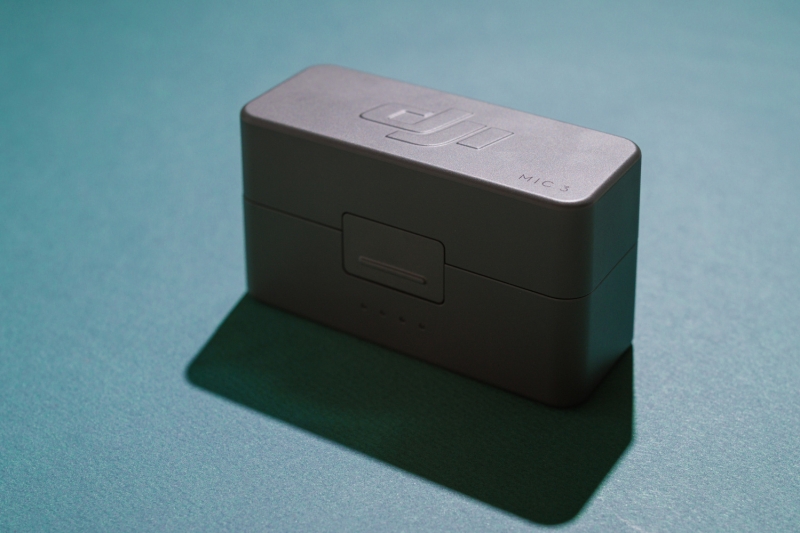
DJI Mic 3 charging case. It’s similar to the Mic Mini charging case except slightly bigger and labelled as Mic 3.
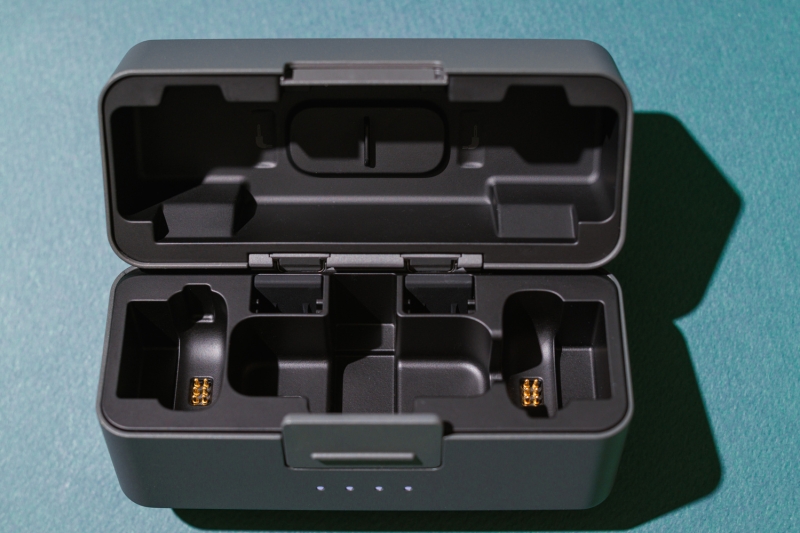
Dedicated slot for accessories, twi transmitters, and one receiver.
Inside, the all-in-one layout has dedicated slots that can house one receiver, two transmitters with windscreens and magnetic clips attached, two phone adapters (USB-C and Lightning), two magnets, and a 3.5 mm TRS to TRS audio cable. The receiver can also be stored with the phone adapter still attached, saving time when moving between setups. To keep everything secure, DJI has also magnetized the slots so the transmitters and receiver snap neatly into place.
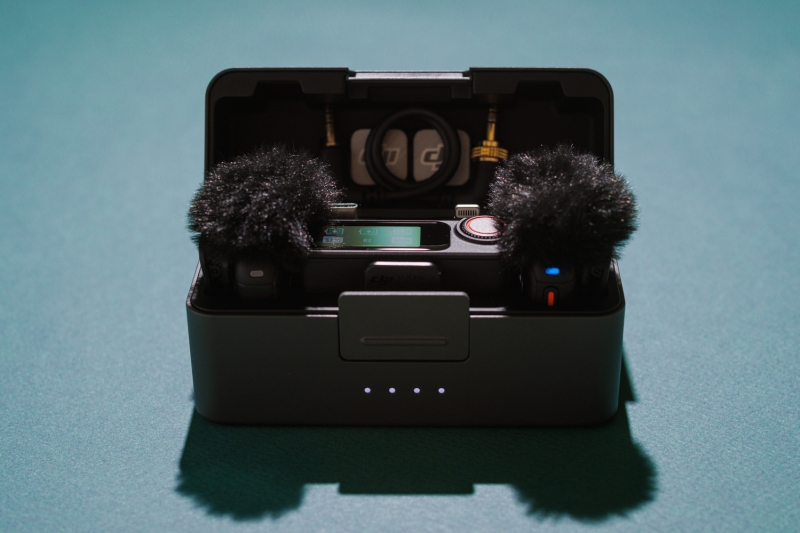
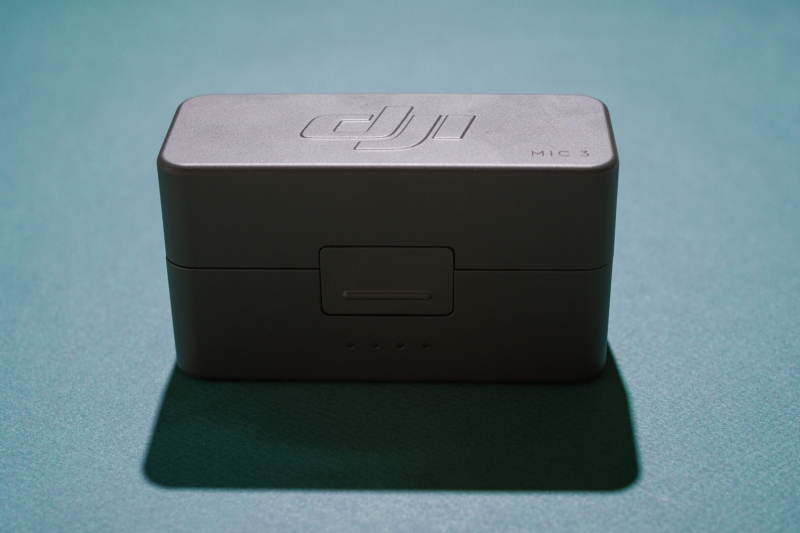
The case itself isn’t just for storage—it doubles as a power bank for the mic. With a 1,950 mAh built-in battery that fully charges in about 1.5 hours, it can recharge two transmitters and one receiver approximately 2.4 times, making it a reliable backup for long shooting days. A quick five-minute charge gives the mics an extra hour of runtime—perfect for creators always on the go. On the outside, you’ll also find a USB-C port that handles both charging and data transfer for internal recordings, turning the case into a compact hub for power and file management.
Features
The DJI Mic 3 isn’t just another refresh—it is probably DJI’s most advanced mini wireless mic yet, aiming to deliver more versatile use beyond audio receiving while maintaining portability. With 32-bit dual-file internal recording, timecode support, adaptive gain control, a wireless system that scales up to eight receivers with four transmitters, and a 400 m recording range (meant less for extreme distance and more for ensuring rock-solid connection in interference-heavy environments), the Mic 3 is designed with enough flexibility to handle filmmaking production that scales beyond solo creators.
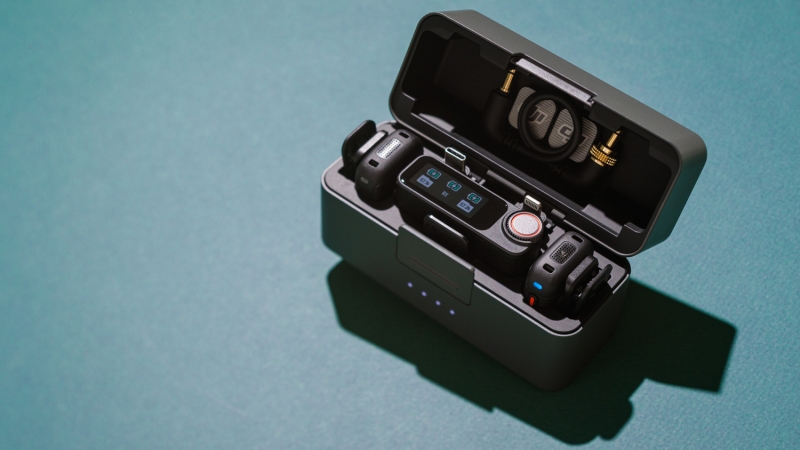
Receiver Features
Beyond acting as the main control hub for the Mic 3, the receiver offers up to three recording modes:
-
Mono Mode: Combines all transmitters into a single channel.
-
Stereo Mode: Separates the audio from two transmitters into left and right channels.
-
Quadraphonic Mode: Records each of the four transmitters to separate channels for advanced mixing.
Do note that currently, the quadraphonic mode doesn’t work fully with all cameras. To get the four separate tracks, you are going to need to use the DJI Mic Series Camera Adapter that works with certain Sony cameras’ hot shoes or to connect the receiver to the computer via USB. Audio output from the 3.5mm output port will remain stereo with TX1 and TX3 combined as the left channel and TX2 and TX4 as the right channel. Visit DJI’s official site for more information.
Audio can be captured in lossless mode at 48 kHz, 24-bit for uncompromised clarity. For added convenience, the receiver supports auto on/off with the camera via the 3.5 mm cable or adapter. There is also automatic frequency hopping between 2.4 GHz and 5 GHz, with dedicated indoor and outdoor modes to maximize wireless connection stability. Lastly, for multi-camera shooters, the receiver also has a timecode feature that keeps sync tight with less than 1-frame deviation over a 24-hour period—a huge advantage on larger sets and probably the most anticipated feature on the Mic 3.
Transmitter Features
Despite being small, the transmitters pack just as many intelligent features, if not more. The Mic 3 receiver supports 32-bit float recording, allowing audio to be captured with a wide dynamic range—in photo terms, think of it as recording in RAW instead of JPEG format. Dual-file mode saves both the untouched original and an “edited” version with all audio presets, giving you flexibility to choose later. Each transmitter also comes with 32 GB of internal storage, allowing up to 57.3 hours of recording in single 24-bit mode or 43 hours in 32-bit float. A Low Power Audio Recording function acts as an extra safety net, ensuring the transmitter continues recording internally if the receiver or camera runs low on power.
The transmitters also feature Adaptive Gain Control with two intelligent modes:
-
Automatic Mode: Best for environments with unpredictable loudness changes.
-
Dynamic Mode: Smoothly adjusts output for quieter, controlled settings like studios.
Other tools include a Low-Cut Filter (100 Hz) to clean up rumbles and two-level noise cancellation (Basic for low hums, Strong for loud environments). Attaching the included windscreen further cuts wind and background noise. There are also three voice tone presets (Regular, Rich, Bright) to adapt to different voice characteristics.

DJI Mic 3 attached with Canon R5.
Practical Usage Notes
In practice, DJI has a list of specific audio gain recommendations that vary by camera brand on their tutorial sites. For example, Sony users should set the recording level to “1,” Canon works best at the fourth notch from the left, Nikon cameras at level 3, Panasonic cameras at -12 dB, and Fujifilm cameras at around -28.5 dB. If your camera isn’t listed, the live monitoring and receiver gain slider will help fine-tune levels quickly. Once Adaptive Gain Control is enabled, manual gain becomes disabled.
Real-World Usage
On paper, the DJI Mic 3 is pretty impressive, but what matters most is how it holds up in actual shoots. I tested it during a recent hotel photoshoot to create a video explaining how I handle location challenges. To keep my kit light and unobtrusive, I paired the Mic 3 directly with the DJI Osmo 360 via Bluetooth, tapping into the DJI OsmoAudio™ ecosystem. The experience was seamless, with no messy cables or adapters—exactly the kind of convenience I wanted when moving between rooms. But as with most things, that convenience comes with trade-offs.
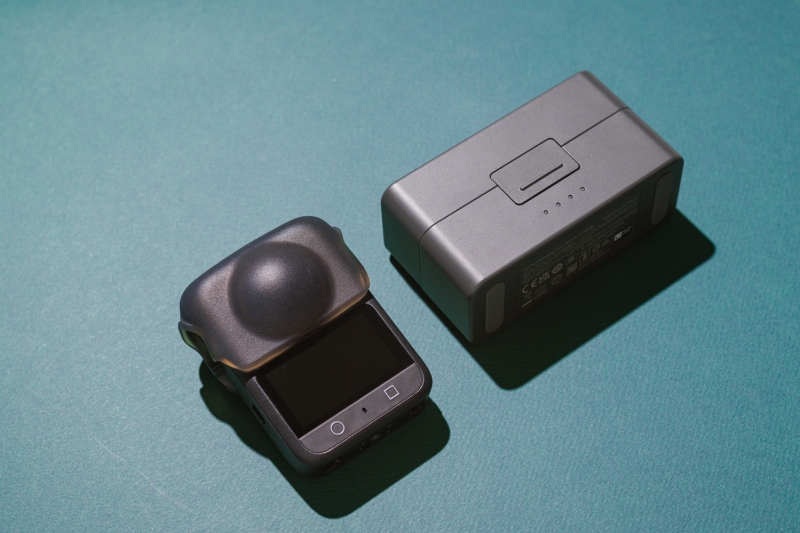
This is all I need to bring for a quick video recording.
The biggest limitation of Bluetooth pairing is the lack of live monitoring. Since you can’t connect AirPods and the mic to the Osmo 360 at the same time, there’s no way to monitor what’s being recorded in real time. This isn’t a big issue for casual vlog sessions. I also noticed power drain was slightly higher than rated—around 20% battery drop in 1.5 hours of continuous recording with noise cancellation and Bluetooth enabled, which works out to about 7.5 hours instead of the rated 8.
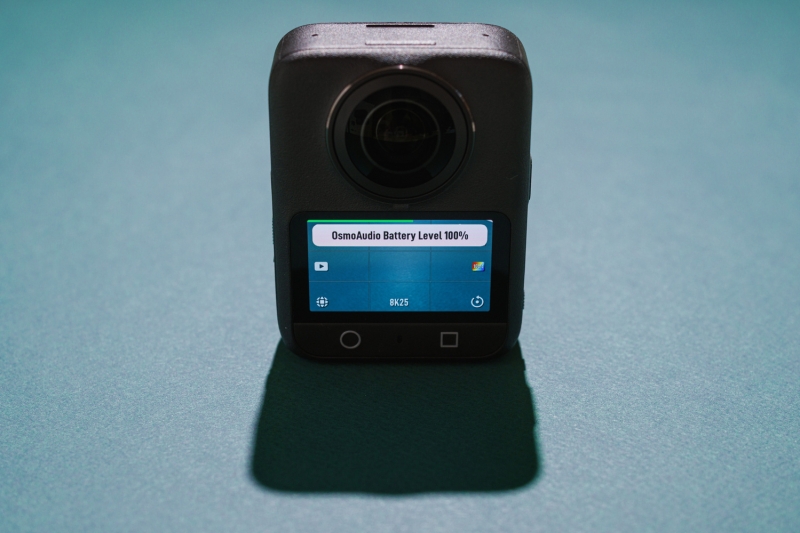
DJI Mic 3 connected to DJI Osmo 360 via Bluetooth
Then there’s the charging case dilemma. On one hand, it’s brilliant at keeping everything neatly together, including power and data management. On the other hand, it becomes a crutch. Since there is no USB-C port on the transmitters themselves, you cannot easily charge or offload recordings without the case. That means if you bring only one transmitter to use with a small DJI camera like the Pocket 3 or Osmo 360, you won’t be able to charge it when low on power. Not so bad if you just need access to the internal recordings, as you can download them wirelessly into your phone via the DJI Mimo app. At the moment, DJI doesn’t sell the single-transmitter dock separately, unless you buy an extra transmitter that comes with one.
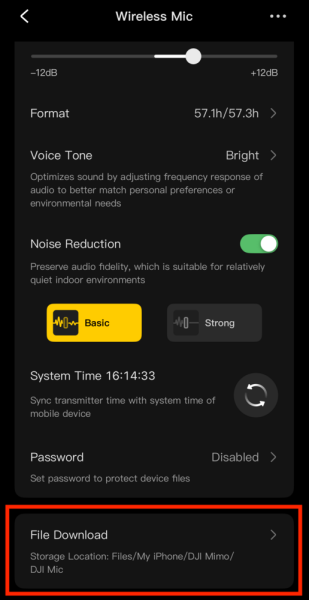
You can access the Mic 3’s internal recording wirelessly by connecting the transmitter to the DJI Mimo app
Pairing the mic with one device automatically disconnects it from the previously connected device, so if you move between cameras, you’ll have to reconnect each time. This is likely a safety feature to prevent duplication when multiple connected devices are in use. Thankfully, the reconnection process is quick and painless.
Now for the good parts. The user interface is well thought out, with recording-related controls in the quick menu and deeper transmitter settings tucked away to avoid clutter. The internal 32-bit float recording is an excellent safety net, giving me peace of mind when I can’t monitor audio live. And in practice, it’s also handy for quickly pulling clean audio straight into editing.
Bonus tip: When paired wirelessly, the Mic 3 can even double as a remote trigger for starting or stopping video recording on the Osmo 360 by clicking the pairing button.
For this video, I kept things simple: everything on auto, with only the transmitter gain manually adjusted. I recorded using the Bright voice tone preset to give more clarity to my naturally muddy voice and kept noise reduction at the low setting to take in some ambient sound. The windscreen was also attached to clean up wind and outdoor noise.
Here’s a video of how I handled one of the challenges during my recent hotel shoot:
Summary
What I Liked
-
32-bit internal recording for flexible post-production
-
DJI OsmoAudio™ ecosystem integration (wireless audio recording and trigger control)
-
Intelligent Adaptive Gain Control
-
Timecode support for precise syncing
-
Compatibility with up to eight receivers for larger-scale projects
-
Solid battery life across the receiver and transmitters
-
Compact, lightweight design
-
Stable wireless performance with reliable range
-
32 GB of built-in memory for extended internal recording
-
Flexible magnetic attachment system with multiple mounting options
-
Well-designed charging case that keeps everything organized
What Could Be Improved
-
No 3.5 mm input, limiting use with external lav mics
-
Lack of wireless live audio monitoring support
-
Could benefit from a slimmer profile for easier concealment without a lav mic
Final Closing Thoughts
The DJI Mic 3 does not feel like a direct upgrade to its predecessor, but rather a shift into a new product segment. It is built not just as a wireless mic, but as a versatile and modern audio solution that expands beyond simple audio receiving. With features like timecode support, adaptive gain, and the ability to scale across multiple cameras and receivers, it’s clear that DJI designed this system for creators who want more than just clean sound. This is the perfect mic for someone who aims to start incorporating it into a larger, more complex production workflow. Get yours today starting from $99 (Single Transmitter), $219 (Single Transmitter and Receiver) or $329 (Two Transmitters and One Receiver Combo).
